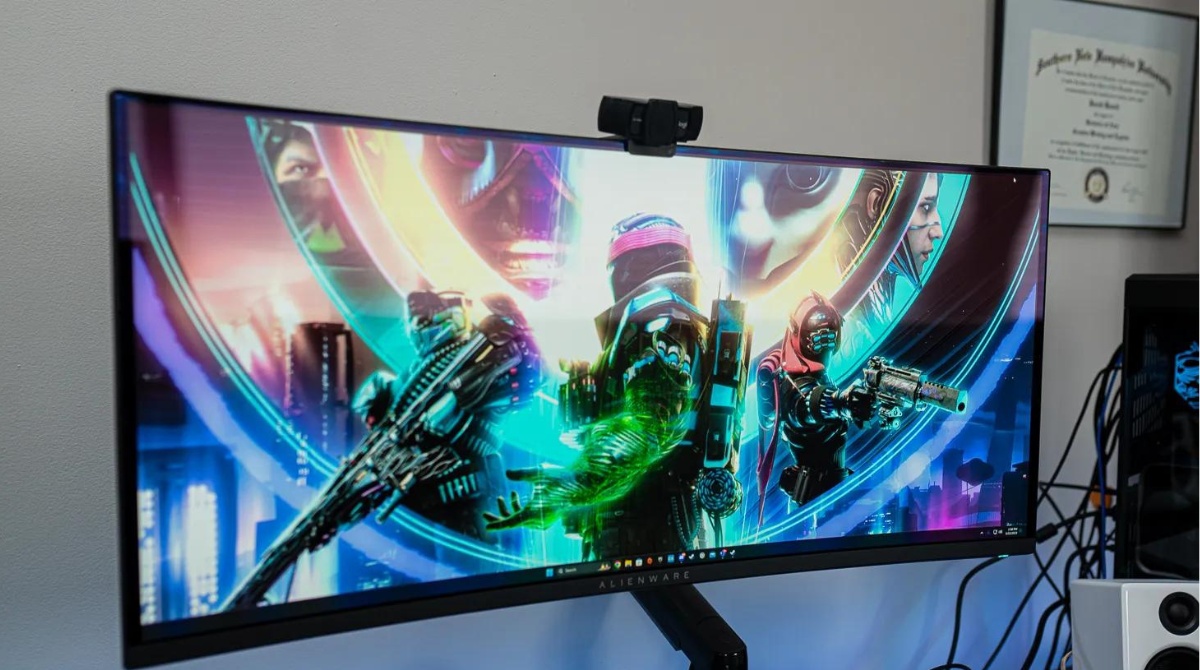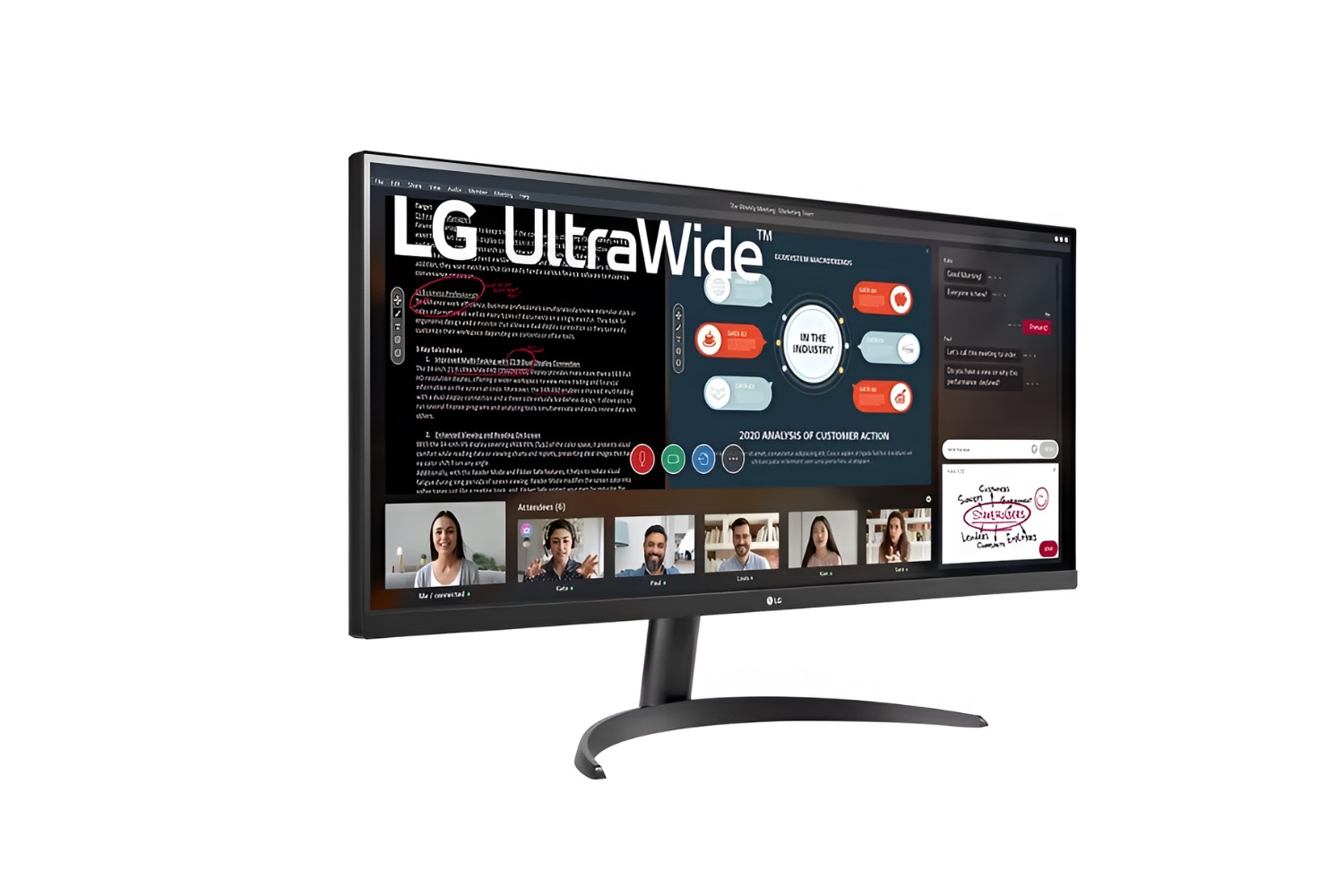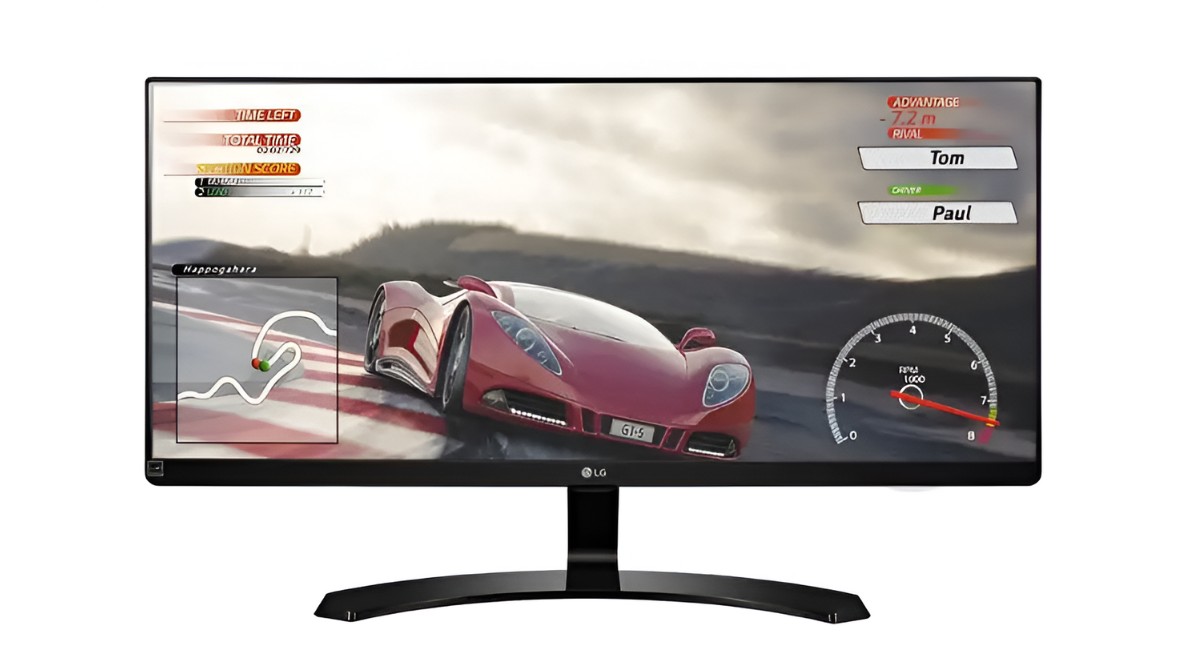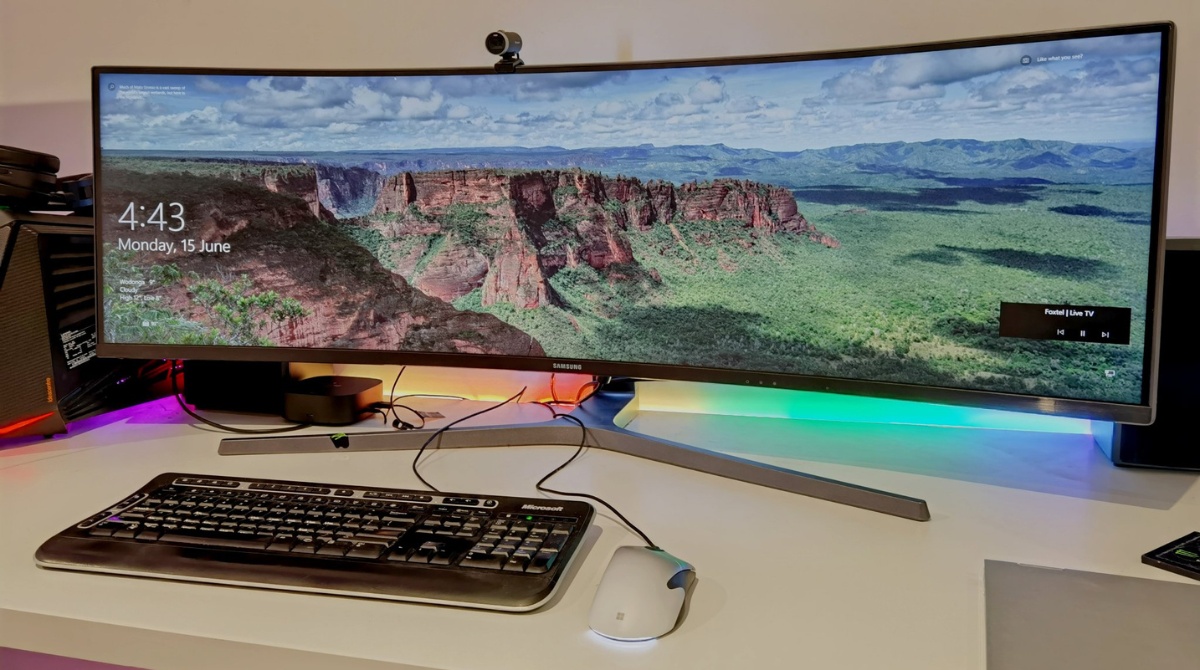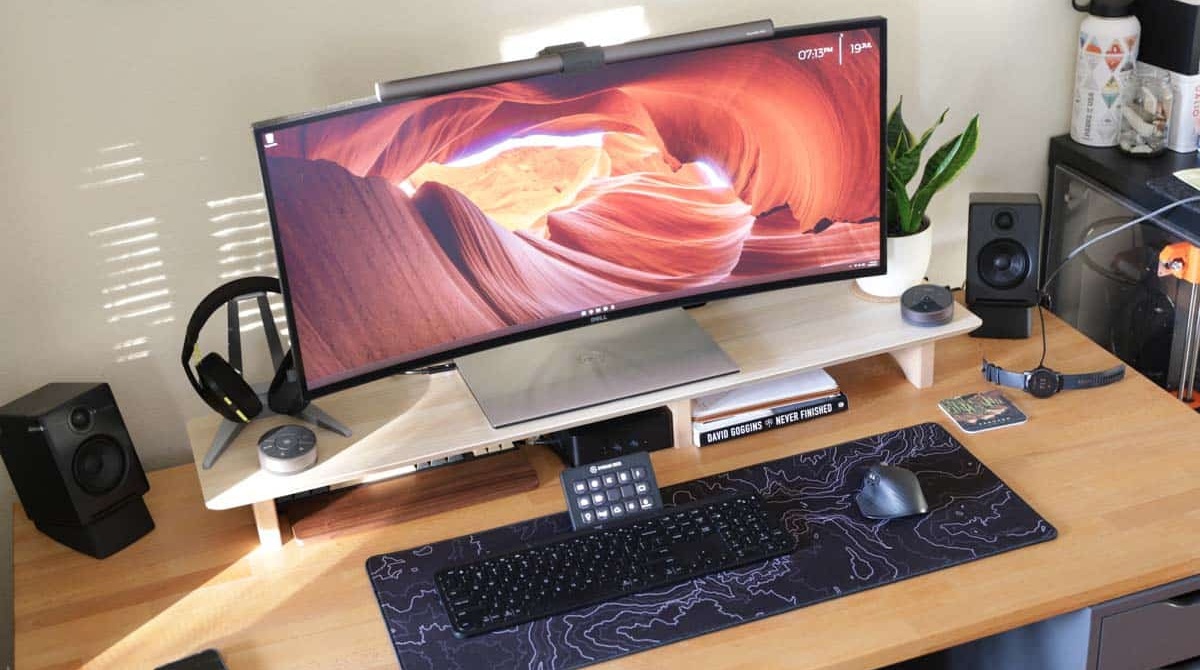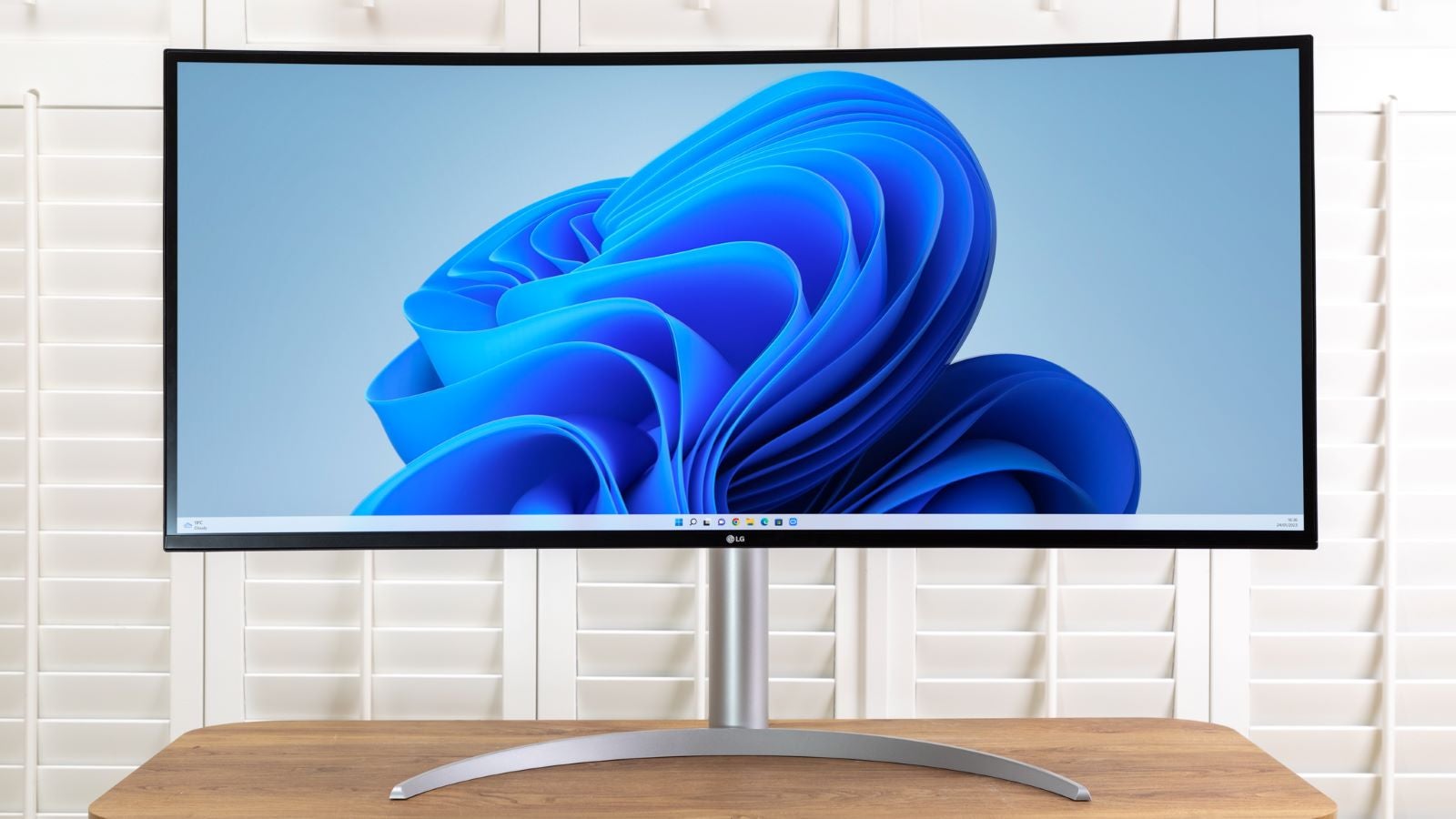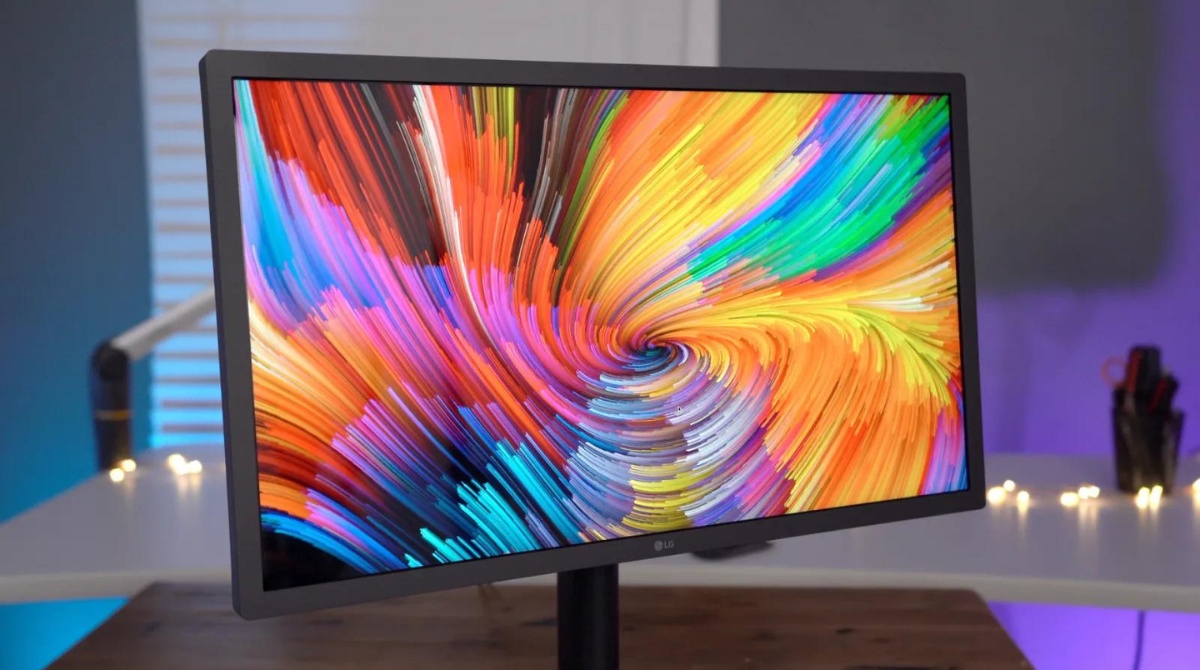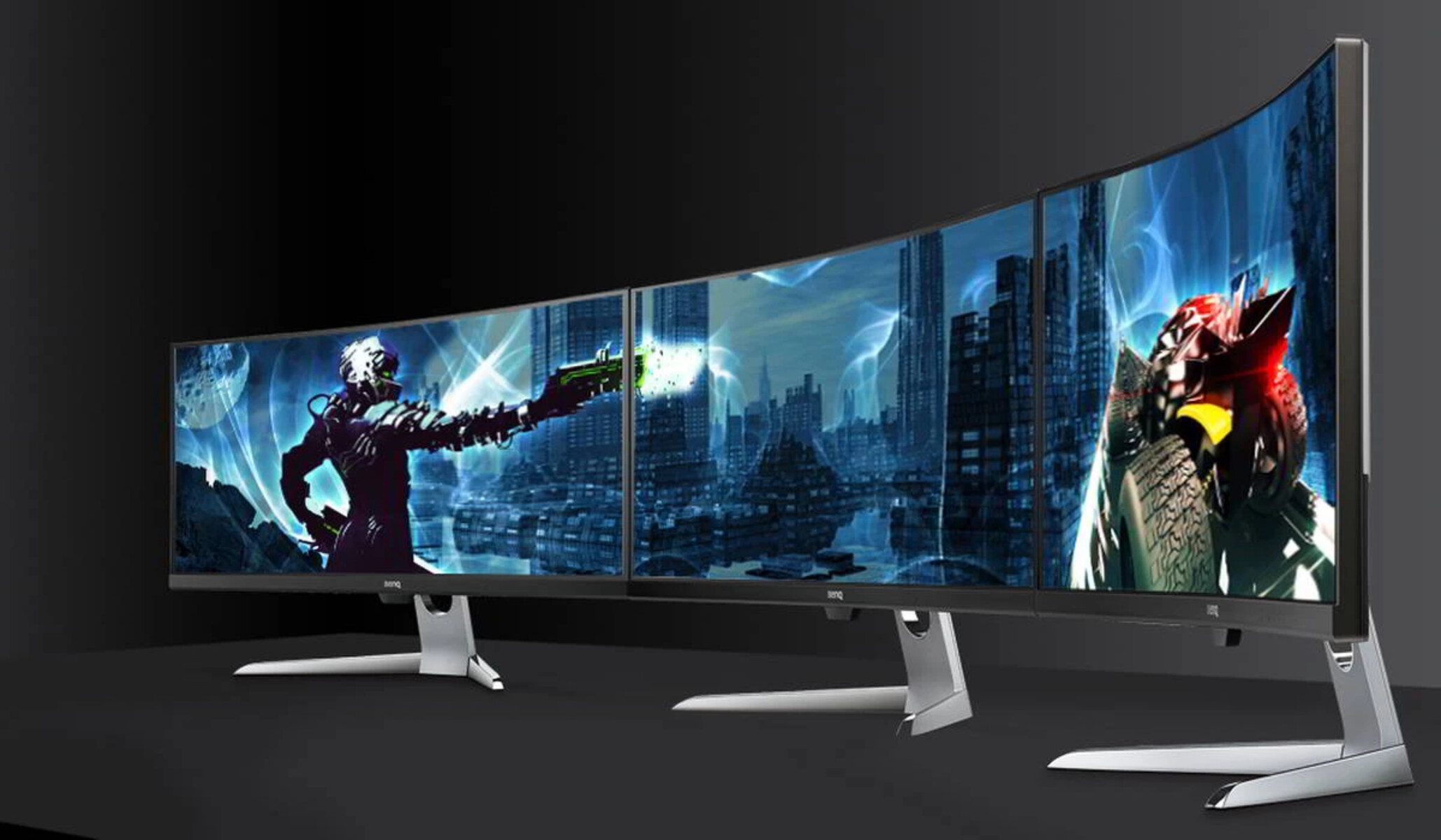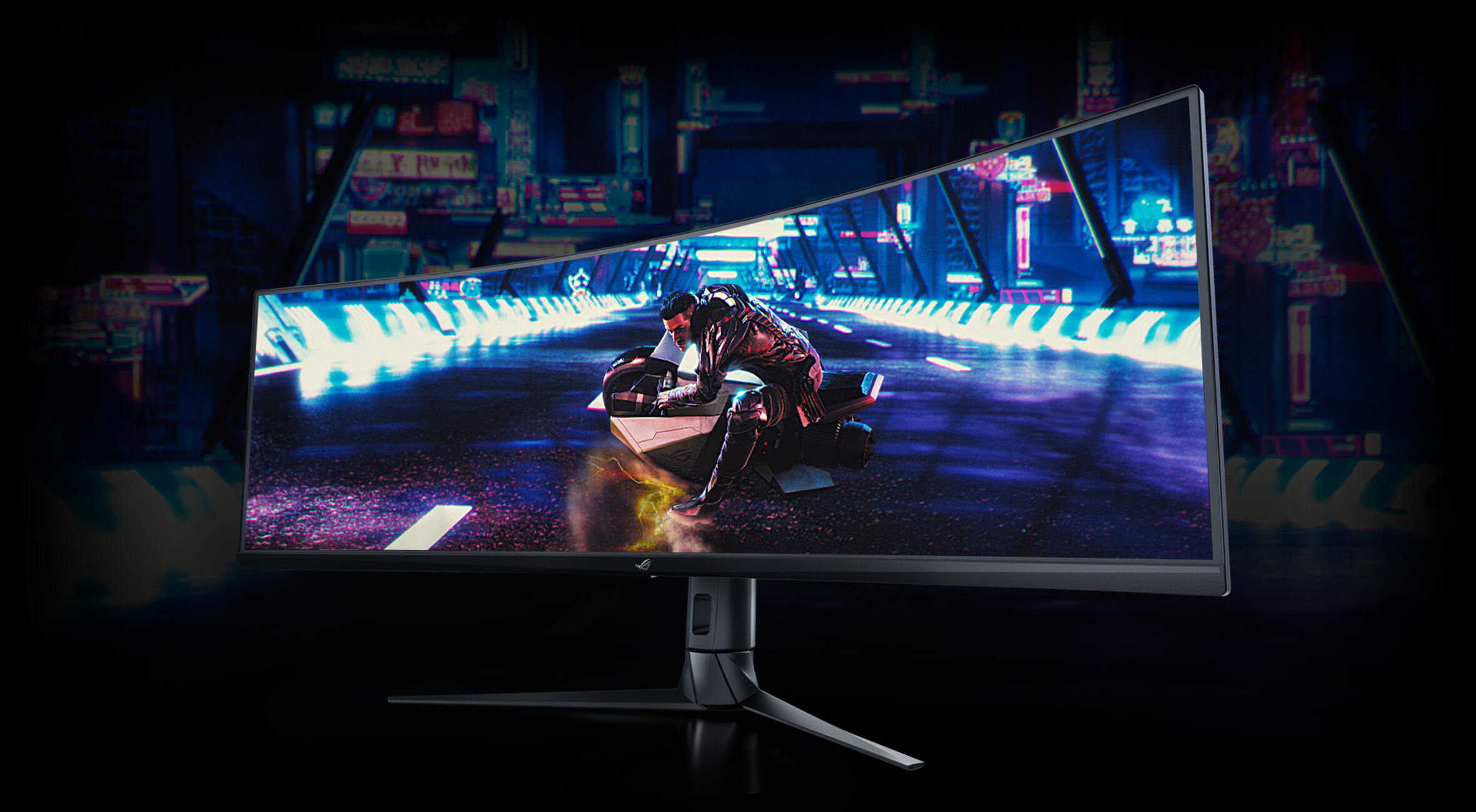Introduction
Ultrawide monitors have become increasingly popular in recent years, offering a wider aspect ratio and immersive viewing experience. These monitors provide users with more screen real estate, allowing for multitasking and enhancing productivity. However, the price of ultrawide monitors can vary significantly, making it important for consumers to be aware of the factors that influence their prices and how to find the best deals.
In this article, we will explore the factors that affect ultrawide monitor prices and examine the historical trend of their price drops. We will also discuss the impact of new technologies on monitor prices and provide predictions for the next ultrawide monitor price drop. Finally, we will share some tips and strategies to help you find the best deals on ultrawide monitors.
Whether you are a gamer, a content creator, or simply someone who values a high-quality display, understanding the dynamics of ultrawide monitor pricing can help you make an informed decision and save money. So, let’s dive into the fascinating world of ultrawide monitors and discover when the next price drop might occur.
Factors that Influence Ultrawide Monitor Prices
Several factors play a significant role in determining the price of ultrawide monitors. Understanding these factors can help you make an informed decision when purchasing a monitor and anticipate potential price fluctuations. Here are some key factors that influence ultrawide monitor prices:
1. Display Technology: The display technology used in ultrawide monitors is a crucial determinant of their prices. Monitors that utilize advanced display technologies such as IPS (In-Plane Switching) or Quantum Dot tend to be more expensive due to their superior color accuracy, wide viewing angles, and high refresh rates. On the other hand, monitors using older display technologies like TN (Twisted Nematic) may be more affordable but offer lower image quality and limited viewing angles.
2. Screen Size and Resolution: Larger screen sizes and higher resolutions contribute to higher prices. Ultrawide monitors typically come in various sizes, ranging from 29 inches to 49 inches, with 34 inches being the most common. Likewise, higher resolutions, such as 3440×1440 (UWQHD) or even 5120×1440 (DQHD), offer more pixels and sharper images, but they often come with a higher price tag.
3. Refresh Rate and Response Time: Gamers and those seeking smooth motion in videos and graphics often prioritize high refresh rates and low response times. Monitors with higher refresh rates, such as 144Hz or even 240Hz, are generally more expensive. Lower response times, measured in milliseconds (ms), also contribute to a higher price as they result in reduced motion blur and ghosting.
4. Curvature: The curvature of an ultrawide monitor affects its price. Curved monitors provide a more immersive viewing experience by mimicking the natural shape of the human eye. However, this added feature can increase the cost of the monitor compared to a flat-screen alternative.
5. Brand and Quality: The reputation of the manufacturer and the overall build quality of the monitor can impact its price. Well-known brands with a history of producing high-quality monitors often carry a premium price. Additionally, monitors with extra features like adjustable stands, USB ports, and built-in speakers may also cost more.
Although these factors significantly influence ultrawide monitor prices, it’s essential to consider your specific needs and budget when making a purchase. A monitor may have all the latest features, but if they aren’t relevant to your usage, it might be more practical to opt for a more affordable option that still meets your requirements.
Historical Trend of Ultrawide Monitor Prices
Over the past few years, the prices of ultrawide monitors have experienced a notable trend. Initially, when ultrawide monitors were first introduced to the market, they came with a premium price tag due to their unique specifications and limited availability. However, as technology advanced and more manufacturers entered the market, the prices started to become more competitive.
In the early stages, ultrawide monitors were considered a luxury item primarily targeted towards professionals in fields like gaming, graphic design, and video editing. These monitors were priced significantly higher than their traditional counterparts, making them inaccessible to the average consumer. However, as demand increased and production costs decreased, we witnessed a gradual decline in prices.
Furthermore, the entrance of new players in the market and the fierce competition among manufacturers have contributed to the decreased prices of ultrawide monitors. With more options available, consumers now have a wider range of affordable choices without compromising on quality and features.
It’s also worth noting that advancements in manufacturing processes, economies of scale, and improvements in technology have allowed manufacturers to produce ultrawide monitors more efficiently and cost-effectively. This has further played a role in driving down the prices over time.
In recent years, there have been significant drops in the prices of ultrawide monitors, particularly during seasonal sales events like Black Friday and Cyber Monday. During these periods, both online and brick-and-mortar retailers offer substantial discounts, making it an ideal time for consumers to snag a great deal on an ultrawide monitor.
Looking at the historical trend, it’s clear that the prices of ultrawide monitors have become more affordable with time. As the demand for these monitors continues to grow, it is anticipated that the prices will become even more competitive in the future.
However, it’s important to note that while overall prices have declined, there are still variations among different models and brands. Higher-end gaming monitors with advanced features may still command a premium price, while more budget-friendly options may offer excellent value for the price. By researching and comparing different options, consumers can find the right balance between price and quality for their specific needs.
The Impact of New Technologies on Prices
New technologies continually shape the landscape of ultrawide monitors, and they often have a direct impact on their prices. As manufacturers introduce innovative features and improvements, it can lead to both an increase and decrease in monitor prices. Let’s explore the influence of new technologies on the pricing of ultrawide monitors.
1. HDR (High Dynamic Range): The integration of HDR technology into ultrawide monitors has made a significant impact on their prices. HDR enhances the contrast, color accuracy, and overall visual quality by expanding the dynamic range between the darkest blacks and the brightest whites. Monitors equipped with HDR support generally come at a higher price point due to the additional hardware and software required to deliver this enhanced visual experience.
2. Adaptive-Sync Technologies: Adaptive-Sync technologies, such as AMD FreeSync and NVIDIA G-Sync, synchronize the monitor’s refresh rate with the graphics card’s output, reducing screen tearing and stuttering during gaming. Ultrawide monitors that support these technologies often come at a higher price compared to models without this feature. The integration of these adaptive-sync technologies requires additional hardware and licensing costs, which contribute to the increased prices.
3. USB-C and Thunderbolt Connectivity: The emergence of USB-C and Thunderbolt connectivity in ultrawide monitors provides a single-cable solution for power, data transfer, and video output. These advanced connectivity options simplify cable management and improve versatility. However, monitors equipped with USB-C or Thunderbolt ports tend to be more expensive due to the additional components and licensing fees associated with these technologies.
4. High Refresh Rate and Low Response Time: Gaming-focused ultrawide monitors with high refresh rates (e.g., 144Hz or 240Hz) and low response times have gained popularity among gamers seeking smooth and responsive gameplay. Monitors with these specifications often come at a higher price because achieving higher refresh rates and lower response times requires advanced panel technology and additional components, such as faster pixel transitions and backlighting systems.
5. Quantum Dot and Nano-IPS Displays: Quantum Dot and Nano-IPS technologies offer exceptional color accuracy, wider color gamut, and improved viewing angles compared to traditional display technologies. Monitors utilizing these advanced panel technologies generally come at a higher price due to the higher manufacturing costs associated with these premium display panels.
While these new technologies contribute to improved performance and visual quality, they also add to the cost of manufacturing ultrawide monitors. However, as technology continues to evolve and become more accessible, we can expect these advanced features to become more affordable over time.
It’s essential to consider your specific needs and budget when deciding which new technologies are worth investing in. While some features may significantly enhance your user experience, others may have minimal impact on your usage. By understanding the impact of new technologies on prices, you can make an informed decision and find the best value for your money.
Predictions for the Next Ultrawide Monitor Price Drop
As the market for ultrawide monitors continues to grow, it’s natural to wonder when the next price drop will occur. While it’s impossible to predict with certainty, several factors provide insights into potential future trends. Here are some predictions for the next ultrawide monitor price drop:
1. Technological Advancements and Competition: The ultrawide monitor market is driven by fierce competition among manufacturers to offer the latest features and technologies. As new and improved models are released, older models typically see a reduction in price to make way for the newer options. Technological advancements in display panels, connectivity, and gaming features are likely to drive down prices as competitors strive to meet consumer demands.
2. Seasonal Sales Events: Traditional retail events like Black Friday, Cyber Monday, and holiday sales are prime opportunities for consumers to find discounts on ultrawide monitors. During these events, retailers often offer significant price drops to attract customers. It’s advisable to keep an eye out for such sales and promotions, as they can provide substantial savings on ultrawide monitors.
3. Increased Production and Availability: As demand for ultrawide monitors continues to rise, manufacturers are likely to increase production to meet consumer needs. Increased production volumes can help drive down manufacturing costs, which may lead to price reductions. Additionally, as more brands enter the market, competition intensifies, creating a further incentive for price drops.
4. Evolution of Display Technologies: The constant evolution of display technologies, such as advancements in Mini-LED or Micro-LED, may influence future price drops. As these technologies become more mainstream and widespread, the costs associated with them may decrease, resulting in more affordable ultrawide monitors.
5. Changing Consumer Preferences: As more consumers embrace ultrawide monitors for gaming, productivity, and entertainment, the market demand will continue to grow. Increased demand often leads to economies of scale, making it more feasible for manufacturers to produce ultrawide monitors at lower costs. This, in turn, can result in price reductions.
While these predictions can provide insights into potential price drops, it’s important to note that market dynamics can be unpredictable. Factors such as global economic conditions, supply chain disruptions, and unexpected technological breakthroughs can impact pricing. However, the overall trend suggests that ultrawide monitor prices are likely to become more affordable as technology advances and competition intensifies.
By staying informed about the market trends, comparing prices, and keeping an eye out for sales events, consumers can increase their chances of finding a great deal on an ultrawide monitor that meets their needs and budget.
Tips for Finding the Best Deals on Ultrawide Monitors
If you’re in the market for an ultrawide monitor and looking to snag the best deal, there are several strategies you can employ to maximize your chances of finding an affordable and high-quality option. Here are some tips to help you find the best deals on ultrawide monitors:
1. Research and Compare: Take the time to research different models, brands, and features of ultrawide monitors. Compare prices across multiple retailers, both online and offline, to get an idea of the average price range. Look for user reviews and expert opinions to gain insights into the performance and durability of different monitors.
2. Seasonal Sales and Promotions: Keep an eye out for seasonal sales events like Black Friday, Cyber Monday, and holiday promotions. These are typically the best times to find significant discounts on ultrawide monitors. Subscribe to the newsletters of your favorite retailers or follow them on social media to stay updated on upcoming sales events and exclusive discounts.
3. Consider Open-Box or Refurbished Options: Open-box or refurbished ultrawide monitors can offer significant savings without compromising on quality. Retailers often offer discounts on these products, which are usually returned items or units that have been repaired. Ensure that these units come with a warranty and check their condition before making a purchase.
4. Check for Bundle Deals or Combo Offers: Some retailers may offer bundle deals or combo offers where you can purchase an ultrawide monitor along with other peripherals or accessories at a discounted price. These packages can be a great value for money and provide you with additional items you may need for your setup.
5. Subscribe to Price Tracking Websites: Utilize price tracking websites or browser extensions that alert you when the price of a specific monitor drops. These tools can help you stay informed about price fluctuations and notify you when the monitor you’re interested in reaches your desired price range.
6. Consider Previous Generation Models: With the constant advancement of technology, new monitor models are regularly released. Consider opting for the previous generation models that still offer excellent performance but may come at a lower price as retailers make room for newer options.
7. Check Manufacturer Websites: Visit the official websites of monitor manufacturers to check for any exclusive deals or discounts they may offer. Manufacturers often provide direct discounts or promotions on their website, allowing you to purchase their monitors at a lower price.
8. Sign Up for Retailer Rewards Programs: Some retailers have loyalty programs or rewards programs where you can earn points on purchases or gain access to exclusive discounts. Sign up for these programs to take advantage of any special offers or member-exclusive deals on ultrawide monitors.
Remember to read the terms and conditions, compare prices, and consider the specifications and features that are most important to you. Finding the best deal on an ultrawide monitor requires patience and thorough research, but the effort can lead to significant savings without compromising on quality.
Conclusion
Ultrawide monitors offer an immersive viewing experience and increased productivity, making them a sought-after choice for gamers, content creators, and professionals alike. Understanding the factors that influence ultrawide monitor prices, such as display technology, screen size, and brand reputation, can help you make an informed purchasing decision. Additionally, keeping an eye on the historical trend of monitor prices, the impact of new technologies, and predictions for price drops can guide your strategy when searching for the best deals.
By researching different models, comparing prices across retailers, and taking advantage of seasonal sales events, you can increase your chances of finding an affordable ultrawide monitor that meets your needs. Additionally, considering open-box or refurbished options, checking for bundle deals or combo offers, and utilizing price tracking websites can help you score significant savings.
It’s important to strike a balance between price and quality, considering your specific requirements and budget when selecting an ultrawide monitor. While prices have become more competitive over time, investing in features and technologies that are relevant to your usage can ensure a satisfying and long-lasting experience.
Keep in mind that the market dynamics for ultrawide monitors can be unpredictable, influenced by factors such as technological advancements, production volumes, and changing consumer preferences. Staying informed about market trends and being patient in your search are key to finding the best deal on an ultrawide monitor.
So, embrace the world of ultrawide monitors, explore the options available, and use the tips shared in this article to make an informed decision. With the right strategies, you can find a high-quality ultrawide monitor that elevates your visual experience without breaking the bank.







